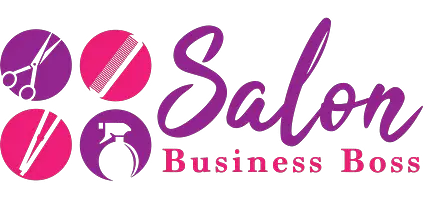The hair salon industry has seen significant growth in recent years, with more people valuing personal grooming and self-care. Owning and operating a hair salon can be a rewarding venture, but it also comes with its challenges. One critical aspect of salon management is ensuring a healthy profit margin to sustain the business and foster growth.
Hair salon profit margin at 8.2% requires efficient operations, skilled staff, and strategic pricing. Streamlining workflows, upselling, and focusing on customer retention are vital for sustained profitability. Embrace technology, monitor financial performance, and invest in professional development to thrive in the competitive industry.
Understanding Profit Margin

Profit margin is a crucial financial indicator that plays a fundamental role in assessing a business’s profitability. In the context of hair salons, it serves as a gauge of how efficiently the salon can convert its revenue into profits after accounting for all operating costs.
To calculate the profit margin, one must first determine the total revenue generated by the salon from providing haircuts, styling, coloring, and other services. Next, the total costs associated with offering these services, including expenses for supplies, employee wages, rent, and utilities, among others, need to be tallied.
Subtracting the total costs from the total revenue yields the profit. The profit is then divided by the total revenue and multiplied by 100 to express it as a percentage. For instance, a profit margin of 8.2% means that for every dollar earned in revenue, the hair salon retains $0.082 in profit.
A profit margin of 8.2% is a positive sign for the salon, indicating that it has managed to strike a balance between generating revenue and controlling operational costs. A higher profit margin implies better financial health, and it provides the salon with more resources for reinvestment, expansion, or weathering economic downturns.
Monitoring the profit margin regularly is essential for salon owners to make informed decisions regarding pricing, cost management, and overall financial strategies. By consistently striving to maintain a healthy profit margin, hair salons can ensure sustainable growth and profitability in a competitive market.
Read more about: Decoding the Average Profit Margin of Hair Salons
Factors Affecting Hair Salon Profit Margin
Several factors influence the profit margin of a hair salon. Identifying these factors and taking proactive measures to manage them can significantly impact the salon’s financial health.
1. Cost of Supplies and Inventory
Effectively managing the costs of hair care products, styling tools, and other salon supplies is a critical aspect of maintaining a healthy profit margin. Salon owners should conduct thorough market research to identify reputable suppliers and negotiate for favorable deals and discounts. Bulk purchasing and long-term contracts with suppliers can often lead to cost savings. Additionally, tracking inventory levels and avoiding overstocking is vital to prevent unnecessary expenses and minimize wastage. Regularly reviewing the quality and pricing of supplies can help strike the right balance between cost-effectiveness and delivering high-quality services to clients. By closely monitoring supply expenses and optimizing inventory management, hair salons can ensure their resources are allocated efficiently, contributing to a more profitable business model.
2. Employee Wages and Benefits
Ensuring employee wages and benefits remain in line with industry standards while managing labor costs is crucial for a salon’s financial health. Providing competitive salaries and benefits can attract and retain skilled stylists, which can positively impact customer satisfaction and client retention. However, it’s equally essential to track labor costs and schedule staff effectively to avoid unnecessary overtime expenses. Regular performance evaluations and merit-based salary adjustments can motivate employees to excel, promoting a more productive workforce. Offering incentives or commission-based structures for upselling and cross-selling services can align employee interests with the salon’s profitability goals. Striking the right balance between rewarding talent and managing labor costs is pivotal to maintaining a sustainable and profitable business.
3. Rent and Overhead Costs
Rent and overhead costs can significantly affect a salon’s profit margin, making it imperative to explore cost-saving measures. Negotiating favorable lease agreements with landlords, particularly for long-term leases, can provide stability and potentially reduce rental expenses. Optimizing space utilization by creating functional layouts and implementing efficient storage solutions can also maximize the value of rented space. Embracing energy-efficient practices, such as using LED lighting and programmable thermostats, can curtail utility expenses. Moreover, keeping a close eye on recurring overhead costs and regularly reviewing vendor contracts can present opportunities for savings. By proactively managing rent and overhead expenses, salon owners can enhance the bottom line and create a more financially sustainable business.
4. Marketing and Promotion
Investing in effective marketing and promotional strategies is a cornerstone of attracting new clients and nurturing existing ones. Digital marketing channels, such as social media, email campaigns, and search engine optimization, can help reach a broader audience and increase brand visibility. Traditional advertising methods like flyers, local partnerships, and referral programs can also be valuable in generating leads. However, it is essential to allocate the marketing budget wisely, focusing on strategies with proven ROI and tracking the performance of different campaigns. By analyzing the effectiveness of marketing efforts, hair salons can optimize their approach, ensuring that resources are utilized efficiently to achieve maximum impact and ultimately drive revenue growth.
5. Pricing Strategy

Determining the right pricing strategy for salon services is a delicate balancing act. Setting prices that are too low can lead to reduced profit margins and may undervalue the quality of services provided. Conversely, pricing too high might deter potential customers, leading to a decline in clientele. Regularly evaluating market demand, competitor pricing, and the cost of service delivery is essential for adjusting pricing strategies accordingly. Introducing different price points or service packages can cater to various customer segments and enhance customer satisfaction. Additionally, keeping abreast of market trends and customer preferences can guide the salon in offering premium services or special promotions strategically. An adaptable and data-driven pricing strategy ensures the salon remains competitive, profitable, and aligned with the evolving demands of its customer base.
Read more about: How To Create Your Salon Pricing
Strategies to Improve Hair Salon Profit Margin
Achieving an 8.2% profit margin in the hair salon industry requires a well-thought-out approach. Here are some strategies to enhance profitability:
1. Streamline Operations:
Efficiency lies at the heart of a successful hair salon. By carefully analyzing and optimizing salon workflows, owners can create a seamless experience for both stylists and clients. Minimizing downtime between appointments and reducing waiting times ensures that the salon operates at its maximum capacity, thereby increasing revenue potential. Implementing salon management software can be a game-changer, automating essential tasks like appointment booking, inventory management, and customer relationship management. With these systems in place, salon staff can focus on delivering exceptional services, enhancing customer satisfaction, and fostering client loyalty.
2. Upselling and Cross-selling:
Empowering stylists to upsell and cross-sell additional services or hair care products can significantly impact the salon’s bottom line. By making relevant recommendations to clients based on their needs, stylists can increase the average transaction value and boost revenue per customer. An effective approach involves offering value-added services or product bundles that align with clients’ preferences. Through upselling and cross-selling, hair salons can not only increase profits but also demonstrate their dedication to providing comprehensive solutions, leading to improved customer loyalty.
3. Focus on Customer Retention:
Client retention is the lifeblood of any successful hair salon. Satisfied, loyal customers are more likely to return for future services and refer new clients through positive word-of-mouth. To foster client loyalty, implement a customer loyalty program that rewards repeat business with exclusive perks or discounts. Providing exceptional customer service, personalized experiences, and timely follow-ups can further strengthen the bond between the salon and its clientele. Positive online reviews and testimonials from loyal customers can also play a pivotal role in attracting new clients. Investing in customer retention strategies pays off in the long run, creating a stable and profitable client base for the salon.
4. Invest in Professional Development:
Stylists are the backbone of any hair salon, and their expertise directly impacts the quality of services offered. Investing in continuous professional development and training programs for stylists allows them to stay updated with the latest trends, techniques, and industry advancements. With enhanced skills and knowledge, stylists can offer specialized and high-value services, positioning the salon as a premium destination for hair care. Skilled stylists are also more likely to command higher prices for their services, contributing to increased revenue and profit margins. By nurturing a culture of growth and education, hair salons can attract top talent and cultivate a reputation for excellence in the industry.
5. Optimize Pricing Structure:
Regularly reviewing and fine-tuning the pricing structure of salon services is crucial to strike the right balance between competitiveness and profitability. By considering factors such as market demand, competitor pricing, and the cost of service delivery, salon owners can make informed pricing decisions. Strategic adjustments may involve introducing tiered pricing for different service levels or bundling services to encourage repeat business. Understanding the perceived value of services and aligning prices accordingly can also lead to increased customer satisfaction and loyalty. Emphasizing transparency in pricing fosters trust with clients and ensures they feel confident about the value they receive from the salon’s offerings.
6. Offer Promotions Wisely:
Promotions and discounts can be effective tools for attracting new customers and driving sales. However, it’s essential to exercise caution and manage promotions wisely to prevent eroding profit margins. Limiting the frequency and duration of promotions helps prevent excessive discounting that may devalue salon services in the eyes of customers. Instead, focus on targeted campaigns aligned with specific goals, such as introducing a new service or attracting clients during slow periods. Measuring the impact of promotions on revenue and customer acquisition is critical to refining future promotional strategies for optimal results.
7. Embrace Technology:

Leveraging technology can revolutionize the salon’s operations and customer engagement. Utilize social media platforms to showcase the salon’s services, share customer testimonials, and run targeted advertising campaigns. An engaging website with an online booking system allows for easy appointment scheduling and enhances the customer experience. Additionally, implementing salon management software can automate administrative tasks, optimize staff scheduling, and simplify inventory management. Harnessing the power of technology not only streamlines operations but also enhances the salon’s online presence, driving customer acquisition and loyalty.
Read more about: Commission-Based Salon Ownership: Steps and Practices
8. Monitor Financial Performance:
Staying on top of the salon’s financial performance is essential for making informed business decisions. Regularly tracking and analyzing key financial metrics, such as revenue, expenses, and profit margins, allows salon owners to identify areas for improvement and optimize resource allocation. Real-time financial insights enable data-driven decisions to address inefficiencies, allocate budgets strategically, and prioritize areas that contribute most to profitability. Proactive financial monitoring helps identify potential issues early on, enabling timely corrective actions and ensuring the salon’s long-term financial health and success.
Conclusion
Maintaining a profit margin of around 8.2% in the competitive hair salon industry requires strategic planning, efficient operations, and a focus on customer satisfaction. By managing costs, optimizing pricing, and investing in employee development, salon owners can enhance profitability while delivering exceptional services to their clients. The journey to a healthy profit margin demands ongoing dedication to excellence and a willingness to adapt to changing market dynamics. With the right strategies and commitment, hair salons can thrive in a dynamic and ever-evolving market.
Frequently Asked Questions

1. How can I ensure my salon operates efficiently?
Streamline workflows, manage appointments effectively, and optimize staff scheduling to reduce downtime and improve productivity.
2. What are some cost-cutting measures for a hair salon?
Negotiate favorable deals with suppliers, optimize inventory management, and implement energy-efficient practices to reduce overhead costs.
3. What role does customer service play in profit margins?
Exceptional customer service fosters loyalty, positive reviews, and customer referrals, ultimately contributing to increased revenue and profit.
To learn more on how to start you own salon checkout my startup documents here.
Please note that the contents of this blog are for informational and entertainment purposes only and should not be construed as legal advice. Any action taken based on the information provided in this blog is solely at your own risk. Additionally, all images used in this blog are generated under the CC0 license of Creative Commons, which means they are free to use for any purpose without attribution.

About the author. Entrepreneur and Salon Business Fan.
Hi! I am Shawn and I am a happy individual who happens to be an entrepreneur. I have owned several types of businesses in my life from a coffee shop to an import and export business to an online review business plus a few more and now I create online salon business resources for those interested in starting new ventures. It’s demanding work but I love it. I do it for those passionate about their business and their goals. That’s why when I meet a salon business owner, I see myself. I know how hard the struggle is to retain clients, find good employees and keep the business growing all while trying to stay competitive.
That’s why I created Salon Business Boss: I want to help salon business owners like you build a thriving business that brings you endless joy and supports your ideal lifestyle.

